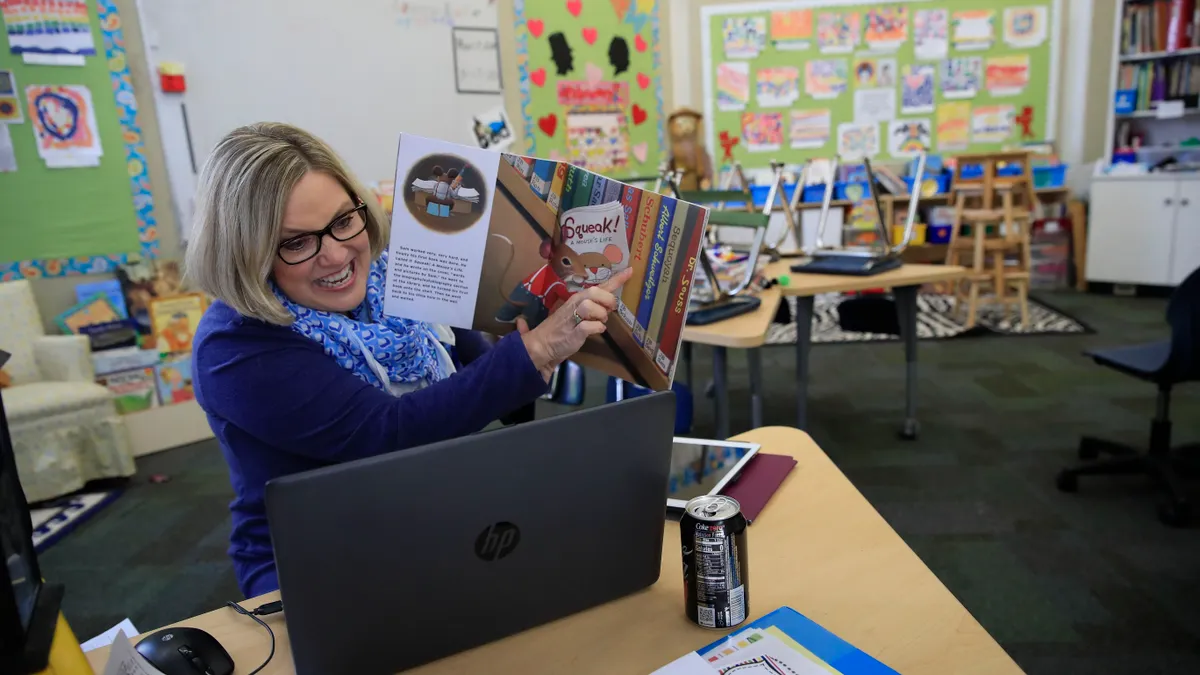Dive Brief:
-
Live instruction and the use of technology apps and platforms were most helpful in supporting students' academic progress during the pandemic, according to a Government Accountability Office report based on a teacher survey and virtual meetings with K-12 stakeholders.
-
The findings, detailed in a report released Tuesday, also found while 69% of teachers surveyed used asynchronous learning, fewer than 40% of those surveyed said it helped at least half their students.
-
This report is the first in a series from GAO that will examine the impact of COVID-19 on K-12 public schools, including teaching and learning during the pandemic and the effect on vulnerable populations. The findings could help districts as they navigate potential extended school closures in the future due to the pandemic or other emergencies.
Dive Insight:
While both in-person and live online instruction were more effective than asynchronous learning, a higher percentage of teachers (85%) said live, in-person instruction improved academic progress in at least half of their students, compared to just over half (56%) of live but virtual instruction, the GAO report said.
The first full school year of the COVID-19 pandemic, which was 2020-21, began with some school systems delaying the start of the first day of school or offering only remote learning. By February 2021, 43% of 4th and 8th grade students were enrolled in remote learning and 35% of students in those grades attended in-person instruction, according to the National Center for Education Statistics.
"The pandemic’s effects continue to reverberate across the nation and produce challenges for schools that will likely be felt for years to come," the GAO report said. "In many respects, the 2020-21 school year offered useful insights that may help schools, educators, and parents in the future."
In the first three months of this year, nearly 100% of the nation's public schools were open for in-person learning, according to NCES.
There's been near universal agreement on the benefits and importance of in-person instruction, with support for that mode coming from educators, lawmakers, advocates, researchers and parents.
But while the availability of in-person instruction is ideal — or even mandatory in some localities — the continuing pandemic and school staffing shortages have created barriers to stable schedules this school year.
The 22-page GAO report discussed other learning obstacles from the 2020-21 school year, which either predated COVID-19 or emerged during the pandemic, as reported by teachers in either in-person or remote settings. Those obstacles included:
- Lack of reliable internet service.
- Difficulty using devices or other technology.
- Trouble getting assistance, support or supervision in their workspaces.
- Limited to no class participation.
- Difficulty understanding lessons.
The survey results from the GAO report include responses from 2,862 K-12 general education public school teachers. The survey was conducted June 18 to July 9, 2021. Additionally GAO and Gallup held 18 virtual discussion groups with public school teachers, parents and principals between June 29 and July 14, 2021.












